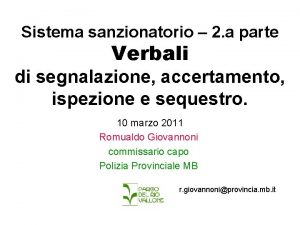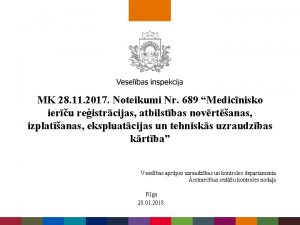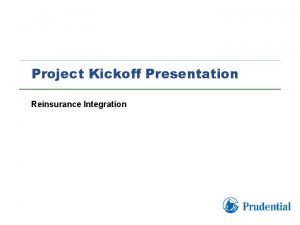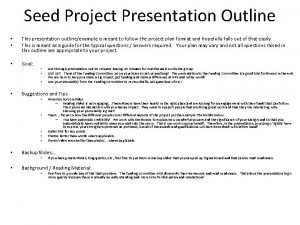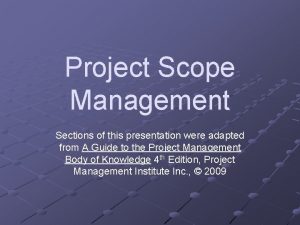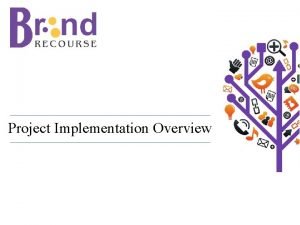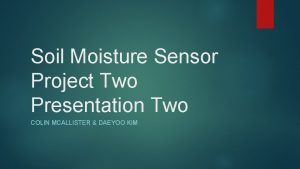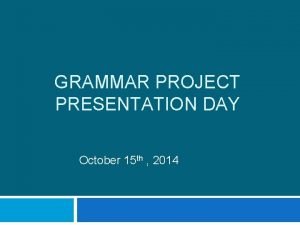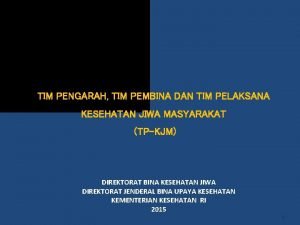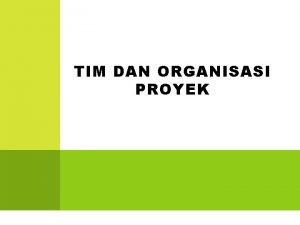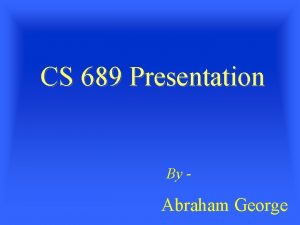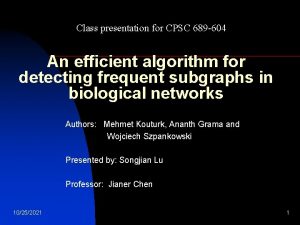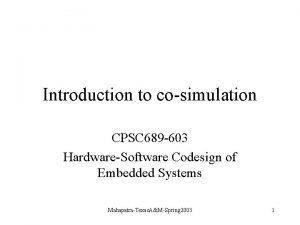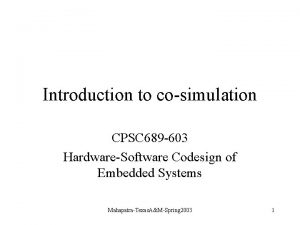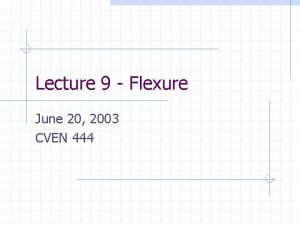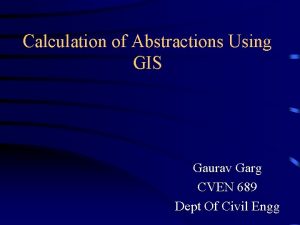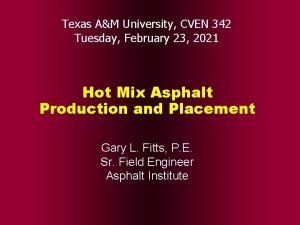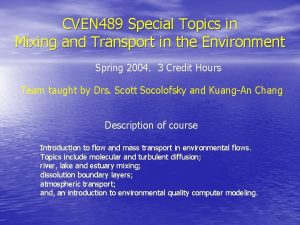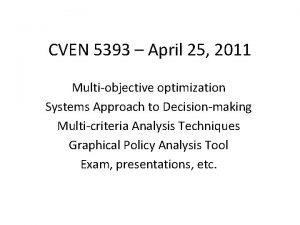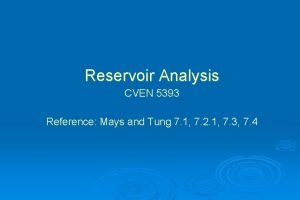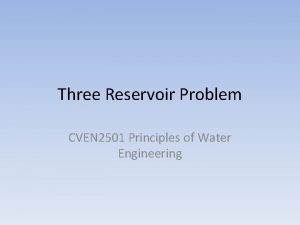CVEN 689 Project Presentation Tim Schniedwind Introduction to






























- Slides: 30

CVEN 689 Project Presentation Tim Schniedwind

Introduction to Project Correlation Between Air Pollution and Population Density in Metropolitan Areas n Target Areas n New York n Chicago n Houston n Los Angeles n

n n Covers Scale from Global Warming to Air inside Homes. Air Pollution Research Produced by Factories(point source), Cars(non point source), stoves etc…

Impacts of Air Pollution n Local(near source) Impacts to Human Health n As it disperses: Impacts to Environment Acid Rain n Holes in the Ozone Layer n Human Health issues n

Importance for Urban Planning n Mass Transportation vs. Expanding Existing Highways or Building New ones n Urban Sprawl n Does More Spread Out = More Pollution

Research Being done: TNRCC n n Ozone measurements for the Houston Area Speed Limit Issue

Air Pollution Models Attempts to Calculate Air Pollution in an Area based on sources of emmission and estimated dispersion and motion of ‘pollution’ n Project in Mendoza Argentina n

Project Goals Learn GIS n Produce at minimum a visual comparison containing: n Population Dot Density Maps for Each target area n surface showing air pollution levels for several pollutants (both average and maximum values) n n Take more of a public policy approach than scientific or engineering perspective

Dot Density Example

Development Platform Arc. Map (Arc. Info 8 line of products) Reasons: n Population Dot Density done automatically, improved joins, other time savers n Location n

Location: Home vs. School Grad Students: Open 9 -5

Data Acquisition: Census Data n www. census. gov n Just. txt files, many per state www. Geographynetwork. com n Census 2000 data n County, Tract, Block n Shapefile Data available on County Level n Tables with Census Data available on Statewide Level n

EPA Air Pollution Data n EPA Airs Monitoring System Yearly data 1994 -1999 n Averages and Peak Values n Shapefile with monitoring locations (. e 00 format) n. dbf table containing the measurements for each monitoring location n

Airs Locations

Airs Locations n Los Angeles n Houston

AIRS Parameters Carbon Monoxide n NO 2 n SO 2 n O 3(Ozone) n PM 10 (Particulate Matter > 10 microns) n Pb (lead) n

Airs Parameters Chosen n Ozone(O 3): formed when VOC’s react with NOx compounds in the presence of sunlight, n most common in summer n human health effects n National Ambient Air Quality Standard: n n 1 hour averaging period <. 125 ppm

Airs Parameter (continued) n PM 10: Measurement of Particles > 10 microns n Particles this size cannot enter lungs n 24 hours: <155 mg/m 3 n n SO 2: Sulfur dioxide n. 035 ppm, hourly n n CO n Carbon Monoxide, Limit: 35. 5 ppm 1 hr. period

Methodology: Dot Density Diagrams Which data to use to generate Dot Density Diagrams, County, Tract, or Block? n Shapefiles only available as county. zip files n n Necessitated selecting individual counties that make up metropolitan area

Tract or Block

Chicago Area Tracts

Dot Density Steps n n Select Counties and Download Tract shapefiles(and associated files) as well as dbf containing census data on the tract level Merge(geoprocessing wizard) County Layers together to form one layer containing all the tracts in the “metropolitan area” Join Metropolitan Area layer with dbf file containing Census Tract Data Use Symbology tab to Set Dot Density Parameters (simlar to legend in Arc. View)

Dot Density Example n Houston Area, Each Dot Represents 150 people

Dot Density Chicago n Each Dot represents 750 people (computational reasons)

Methodology: Creating a Surface n Create a New Table of Monitor Values taking out values for years prior to 1999 Reason: So Join will not introduce Non Uniform Dates n Use “Select by Attributes” and “Export” from the table options menu n n Join Table with Shapefile of monitor location points

Methodology continued Trim out those stations that don’t measure pollution levels for the particular surface being created n Use Spatial Analyst (inverse distance weighting) to Interpolate A Grid from Monitor Point data n

Inverse Distance Weighting Method used for filling in surface based on values collected at measuring stations n Part of the Spatial Analysis Package n IDW assumes things that are closer together are more alike. n Gives higher weighting to those points that are closer to the location it is calculating n

Surface Example n Houston, Ozone Max 1 Hr Values: n (. 125> violates federal regulations)

Future Plans n Pull Everything Together so that it can be analyzed Visually n Draw Conclusions n Numerical Analysis?

Questions n (please help me, I need to fill 13 more minutes)
 Master of civil engineering unsw
Master of civil engineering unsw Cven 302
Cven 302 Verbale sommarie informazioni art. 13 legge 689/81 word
Verbale sommarie informazioni art. 13 legge 689/81 word Mk 689
Mk 689 F tag 689
F tag 689 Tim washington ppm
Tim washington ppm Diameters of fetal head
Diameters of fetal head Cephalic presentation
Cephalic presentation What to say at the end of a presentation
What to say at the end of a presentation Senior project template
Senior project template Vacuum cleaner motor project
Vacuum cleaner motor project Wbs includes
Wbs includes Business admin level 3 project presentation examples
Business admin level 3 project presentation examples Project seminar presentation
Project seminar presentation Project plan presentation
Project plan presentation Project status presentation
Project status presentation Presentation outline example
Presentation outline example Project scope presentation
Project scope presentation Project implementation presentation
Project implementation presentation How to make presentation for final year project
How to make presentation for final year project Project intake process presentation
Project intake process presentation Six sigma project presentation
Six sigma project presentation Project intake process best practices
Project intake process best practices 8-5 project part two: presentation
8-5 project part two: presentation Project closeout presentation
Project closeout presentation Church building project presentation
Church building project presentation Project seminar presentation
Project seminar presentation Project scope presentation
Project scope presentation Project presentation outline
Project presentation outline Fyp presentation slides templates
Fyp presentation slides templates Project presentation day
Project presentation day


